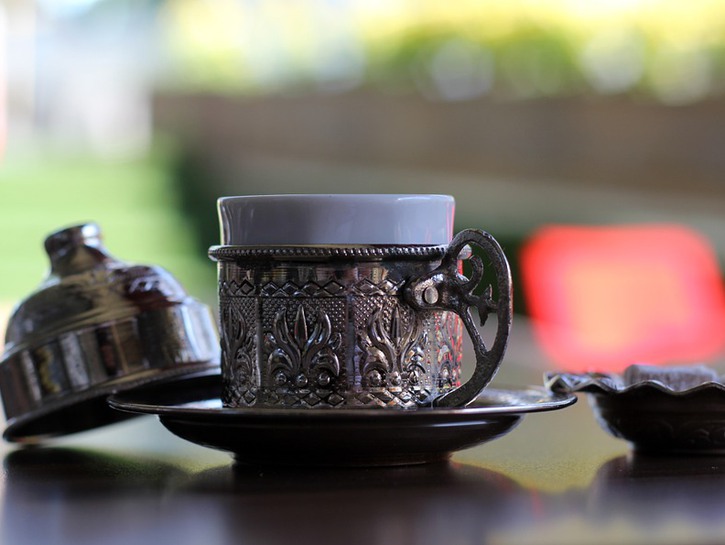You’ve asked for a zarf. You’ve held a zarf. You’ve relied on a zarf. This esoteric word conjures images of mystical prowess when in fact, it is a boring object used by most people every day. Zarf simply means “envelope” in Turkish. We know it as “the cardboard sleeve that you put around your to-go coffee cup”. A zarf makes it possible for us to hurriedly grab our morning nectar without the cup becoming too hot to carry. But for such an innocuous object, why does it have such an extravagant name? Let us dive into the history of the zarf!
Brief History of Turkish Coffee Houses

To understand that, we have to go back to 16th century Turkey when the first Turkish coffee houses were created and their famously robust coffee was served ceremoniously. According to Turkish Style Ground Coffee, under the rule of the Ottoman Empire, which banned alcohol, coffee became the premier social drink. Turkish coffee houses became the destinations where discussions regarding the present political and social climate captivated the men-only facilities for hours. They became such a powerful cultural thread that the sultan of the Ottoman Empire, threatened by these gatherings, banned coffee altogether in the 17th century. The people revolted and the sultan reluctantly reopened coffee houses, albeit with a heavy tax. Today, Turkish coffee houses are still the social and cultural epicenters, and the coffee is consumed much the same way as they did centuries ago.
Preparation of Turkish Coffee

Turkish coffee uses special equipment to grind fresh beans. The finely ground coffee is slowly brewed in a long-handled pot called acezve. There is a certain time to add sugar and a particular way of stirring the coffee. Ultimately, the goal is to create a viscous and potent drink that has a good amount of foam on it. This step-by-step guide gives you directions if you choose to make your own!
Serving Turkish Coffee – The Zarf

Just as the preparation of coffee is painstakingly ritualistic, so is how the coffee is served. Because coffee signifies friendship and loyalty, the server presents it ornately to illustrate their affection. It is poured into a small porcelain cup called a kahve finjan which doesn’t have any handles. Because the liquid is so hot, the cup is then placed into a decorative holder, usually made of metal, called a zarf. This combo is then placed onto an artistic serving tray with a glass of water and a little sweet treat now categorized as “Turkish delights”.
Present Day Zarfs

With all of that tradition, ceremony, and adoration, you can see why a simple object has such an elaborate name. It all means something. The more ornate and expensive the material of a zarf, the more honorific it is. This is quite unlike the technical term we use in Western, contemporary society: Java Jacket. The name is almost laughable considering its historical roots. However, as described by the Smithsonian Magazine, Jay Sorenson, who patented the cardboard sleeve in 1995, nets about eight million dollars a year off it which is no laughing matter. He tried to create a thicker, more insulated cup to protect hands from the heat but found that was too expensive and difficult. So he took an ancient concept, turned it on his head, then made it commercial and functional if unremarkable.
So now you know what a zarf is, you can confuse your barista and ask for it by name!
